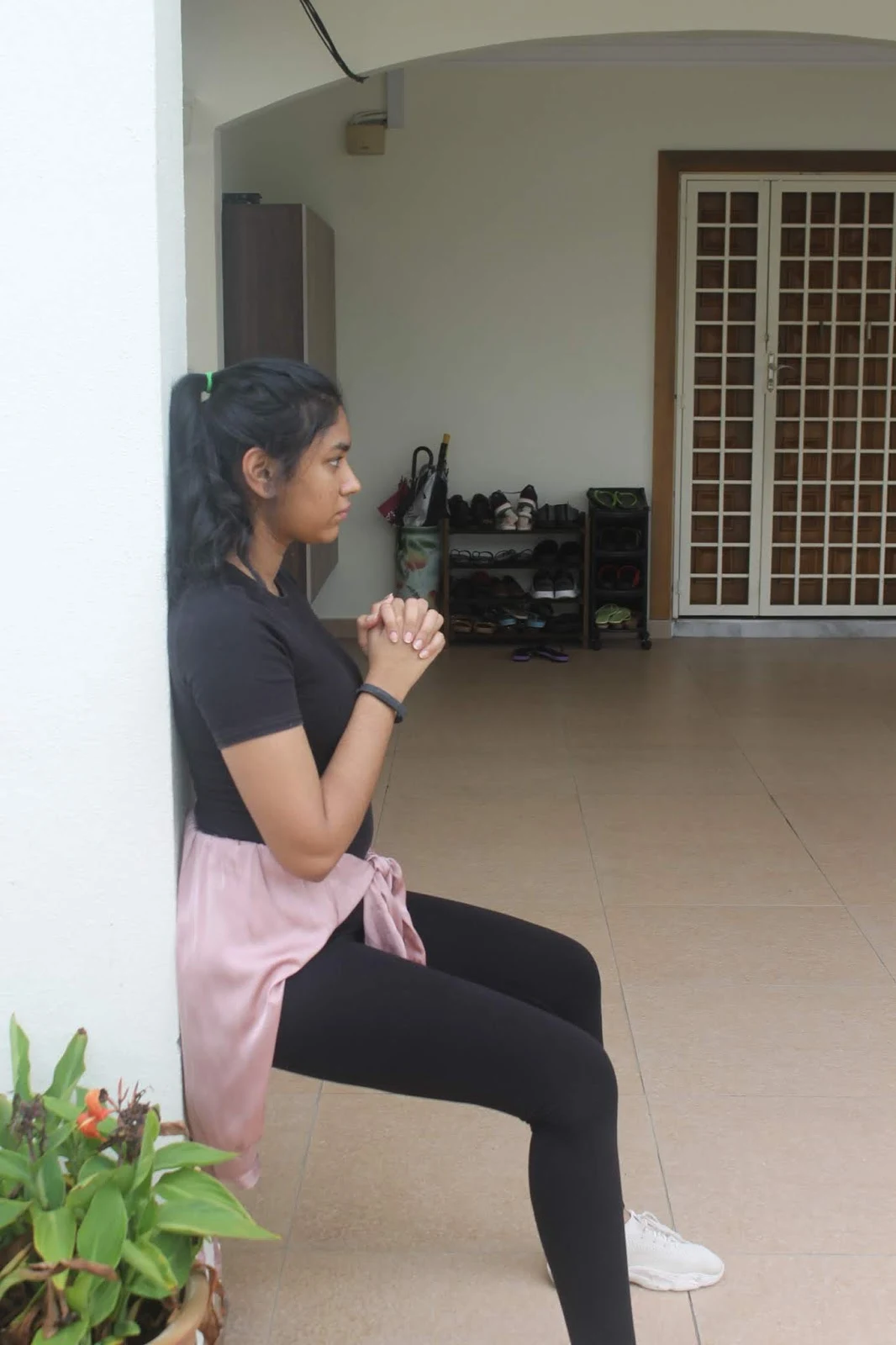Search Blog
Hit enter to search or ESC to close
Trending Now
AirAsia wins Platinum in travel category at Putra Brands Awards
- Get link
- X
- Other Apps
Touch ‘n Go Wins Super Aspiring Brand Award in the Lifestyle Category at the Shopee Super Awards 2023
- Get link
- X
- Other Apps
Samsung Galaxy S23 Ultra 5G: The Best Smartphone To Buy
- Get link
- X
- Other Apps
Home
5 Low Impact Exercises To Help Keep Your Body Flexible, Strong And Safe From Injury During Ramadan
Home
5 Low Impact Exercises To Help Keep Your Body Flexible, Strong And Safe From Injury During Ramadan
Brandon Chua
- Get link
- X
- Other Apps
Reading Time
With noticeable changes in eating and sleeping routines during Ramadan, many of those fasting in the holy month will observe changes in their physical structure and fitness levels. Contrary to the popular belief, that physical activities should be avoided while fasting, researchers actually recommend 30 minutes of exercise even during Ramadan to keep the body fit and functioning optimally.
Some recommended forms of exercise during Ramadan often include a moderate jog, low impact sports like golf and light weights, done about 2-3 times a week. However, since your body is often dehydrated and low on energy levels during Ramadan, it is important to ensure that you have a proper warm-out and cool down sessions planned into your workout to make room for your muscles to stretch, gain composure and stay protected from injuries. Here are a few low impact moves and stretches that you should incorporate at the end of your warm-up or right after your workout, or even repeat them regularly for a simple home workout to keep your energy levels optimal during Ramadan.
Calves & Feet
Ankles
Balance on one foot, bend your knee and slowly lower your body a couple of inches with a straight back. Slowly straighten your knee and stand upright again, then rotate your upper body from the hip from left to right. Repeat 10 times and switch to the other leg. This will strengthen your ankles.
Knees
To help avoid knee problems, you can do wall-sits. Place your feet away from the wall, press your back against it and slowly slide down with knees stacked over ankles, feet flat on the floor. Bring your thighs parallel to the floor. Hold for 30 seconds, then return to an upright position. Repeat five times.
Lower Back
To counter lower back pain, get down on your hands and knees and slowly extend and lift your right arm and left leg, simultaneously. Look toward the floor, keeping your body stable and your abs contracted. Hold for 15 seconds and repeat five times. Then switch to the opposite side.
To avoid shoulder pains, try the following exercise: stand up with slightly bent knees, feet hip-width apart, and lean forward from the waist with arms hanging down. Hold a weight (3 to 5 pounds) in each hand and slowly lift arms to the sides away from the body with your shoulder blades moving toward each other. Hold for a few seconds, then return to the starting position. Repeat 10 times.
Bonus Tip: Add Yoga & Pilates in your fitness regime for a balanced workout
While regular activities such as running or swimming keep your body healthy and strong, they might also result in uneven wear of muscles and joints, lack of flexibility and, ultimately, discomfort, especially when you’re low on energy levels during the fasting month. Deep breathing and yoga can help prepare your body for the strain that comes with exercise, stimulate blood circulation, make sore and shortened muscles more flexible, avoid injuries from other activities, counter physical and emotional stress and open up body areas that are tense or off-balance. Pilates has similar effects, with a particular focus on stabilizing the "core" of the body—the back and abdomen. If you are unsure where to begin, look up and join some online classes that can help you gain a good foundation for at home yoga and Pilates.
Incorporating simple workouts during fasting month will not only make you feel more energetic but also keep your body in good form and shape. If you have not been working out regularly, have suffered from previous sports related injuries, or have stiff/sore muscles it is important that you keep them well protected with additional support before you embark on your workout regime. 3M’s FUTURO™ ready-to-use supports and braces put science to work for you to provide the comfort, fit and compression you need to get the most out of each motion. Here’s how it works:
Warmth: The warmth created by the special texture and fit of FUTURO™ supports promotes microcirculation within the small vessels in the areas that need healing. This increases metabolic activity in the warmer areas so that more oxygen and nutrients can reach the tissue and support the healing process.
Proprioception: FUTURO™ supports use continuous gentle pressure to stimulate special receptors (proprioceptors) in the skin and tissue. This invigorating process can improve your body’s biomechanics and coordination of muscles.
Compression: The gentle compression that FUTURO™ supports exert, both on the joint and the underlying soft tissue, prevents the painful accumulation of fluid. Swelling in the joints subsides faster and tension in the soft tissue diminishes. Soon, you feel pain relief and the increased energy that comes with healthy circulation.
FUTURO™ Supports and Braces provide you the correct support, comfort and fit you need, anytime, anywhere. Do consult a medical professional today to find the most suitable solution for your needs.
We hope that you are able to continue safe workouts this Ramadan and keep upbeat throughout the fasting month.
Disclaimer: This information is not intended to be a substitute for professional medical advice, diagnosis or treatment. Always seek the advice of a doctor with any questions regarding a medical condition. Do not disregard professional advice or delay in seeking it because of something you read here.
Some recommended forms of exercise during Ramadan often include a moderate jog, low impact sports like golf and light weights, done about 2-3 times a week. However, since your body is often dehydrated and low on energy levels during Ramadan, it is important to ensure that you have a proper warm-out and cool down sessions planned into your workout to make room for your muscles to stretch, gain composure and stay protected from injuries. Here are a few low impact moves and stretches that you should incorporate at the end of your warm-up or right after your workout, or even repeat them regularly for a simple home workout to keep your energy levels optimal during Ramadan.
Calves & Feet
To avoid tight calf and foot muscles, face a wall, stretch out your arms and place your palms on the wall. Bend one leg and put the other behind you. With your back leg, press the heel into the floor until you feel the stretch at the back of your leg. Hold for 30 seconds and repeat two to three times. Then repeat with your other leg.
Ankles
Balance on one foot, bend your knee and slowly lower your body a couple of inches with a straight back. Slowly straighten your knee and stand upright again, then rotate your upper body from the hip from left to right. Repeat 10 times and switch to the other leg. This will strengthen your ankles.
Knees
To help avoid knee problems, you can do wall-sits. Place your feet away from the wall, press your back against it and slowly slide down with knees stacked over ankles, feet flat on the floor. Bring your thighs parallel to the floor. Hold for 30 seconds, then return to an upright position. Repeat five times.
Lower Back
To counter lower back pain, get down on your hands and knees and slowly extend and lift your right arm and left leg, simultaneously. Look toward the floor, keeping your body stable and your abs contracted. Hold for 15 seconds and repeat five times. Then switch to the opposite side.
Shoulders
To avoid shoulder pains, try the following exercise: stand up with slightly bent knees, feet hip-width apart, and lean forward from the waist with arms hanging down. Hold a weight (3 to 5 pounds) in each hand and slowly lift arms to the sides away from the body with your shoulder blades moving toward each other. Hold for a few seconds, then return to the starting position. Repeat 10 times.
Bonus Tip: Add Yoga & Pilates in your fitness regime for a balanced workout
While regular activities such as running or swimming keep your body healthy and strong, they might also result in uneven wear of muscles and joints, lack of flexibility and, ultimately, discomfort, especially when you’re low on energy levels during the fasting month. Deep breathing and yoga can help prepare your body for the strain that comes with exercise, stimulate blood circulation, make sore and shortened muscles more flexible, avoid injuries from other activities, counter physical and emotional stress and open up body areas that are tense or off-balance. Pilates has similar effects, with a particular focus on stabilizing the "core" of the body—the back and abdomen. If you are unsure where to begin, look up and join some online classes that can help you gain a good foundation for at home yoga and Pilates.
Incorporating simple workouts during fasting month will not only make you feel more energetic but also keep your body in good form and shape. If you have not been working out regularly, have suffered from previous sports related injuries, or have stiff/sore muscles it is important that you keep them well protected with additional support before you embark on your workout regime. 3M’s FUTURO™ ready-to-use supports and braces put science to work for you to provide the comfort, fit and compression you need to get the most out of each motion. Here’s how it works:
Warmth: The warmth created by the special texture and fit of FUTURO™ supports promotes microcirculation within the small vessels in the areas that need healing. This increases metabolic activity in the warmer areas so that more oxygen and nutrients can reach the tissue and support the healing process.
Proprioception: FUTURO™ supports use continuous gentle pressure to stimulate special receptors (proprioceptors) in the skin and tissue. This invigorating process can improve your body’s biomechanics and coordination of muscles.
Compression: The gentle compression that FUTURO™ supports exert, both on the joint and the underlying soft tissue, prevents the painful accumulation of fluid. Swelling in the joints subsides faster and tension in the soft tissue diminishes. Soon, you feel pain relief and the increased energy that comes with healthy circulation.
FUTURO™ Supports and Braces provide you the correct support, comfort and fit you need, anytime, anywhere. Do consult a medical professional today to find the most suitable solution for your needs.
We hope that you are able to continue safe workouts this Ramadan and keep upbeat throughout the fasting month.
Disclaimer: This information is not intended to be a substitute for professional medical advice, diagnosis or treatment. Always seek the advice of a doctor with any questions regarding a medical condition. Do not disregard professional advice or delay in seeking it because of something you read here.
You May Also Like
Affordable, Simple, and Accessible: DearTime Launches as Malaysia’s First Life Insurer in the BNM Sandbox
- Get link
- X
- Other Apps
Driving in Style and Comfort: A Comprehensive User Experience with Hamel Malaysia Ultimate Car Care Services
- Get link
- X
- Other Apps


















